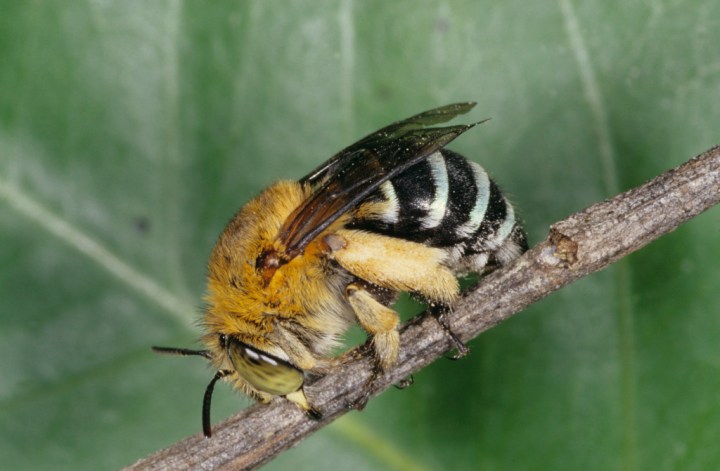By Dr Chris Burwell, Senior Curator of Insects, Queensland Museum
Blue-banded bees, a name used for several species of Amegilla, are common visitors to Queensland gardens and are one of our most beautiful Australian native bees. Their boldly banded backsides (abdomens in entomological lingo) make these stocky bees stand out. The paler bands on the abdomen are made up of thousands of tiny, tightly-packed hairs.
Depending on the particular species, there are close to a dozen in Australia, the paler bands can be metallic blue, aqua, green or even orange, yellow or whitish. Blue-banded bees don’t live in a hive, they are solitary bees. Each female makes her own nest, which is usually a burrow in the ground.
You might think this would make them good at social distancing, however some species, can be communal nesters. Where there is an area of prime real estate for their burrows, many females nest in close proximity with their burrow entrances crowded together.
Blue-banded bees are buzz-pollinators where they grasp flowers and then rapidly vibrate the powerful flight muscles in their thorax. These vibrations are transferred through to the head, shaking the pollen loose. If you listen carefully you can hear the vibrations as a high-pitched, short buzz.
The flowers of many of our native plants, and some crop plants such as tomatoes, are specially adapted to be pollinated by buzz-pollinators. The anthers of the flower are like pepper pots and the pollen needs to be shaken out through tiny pores. Introduced honeybees are very inefficient pollinators of these types of flowers, so we need our native buzz-pollinators.

Ask an expert
If you have a specific question about wildlife around your home submit it via our ‘Ask an Expert page.’

You must be logged in to post a comment.